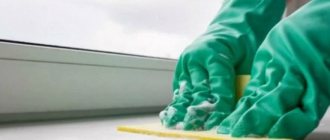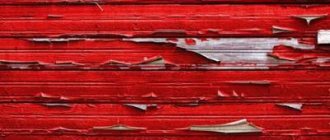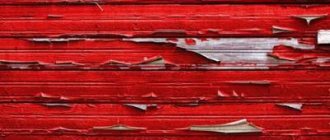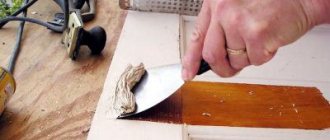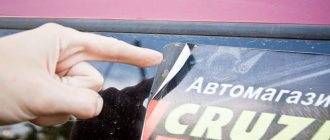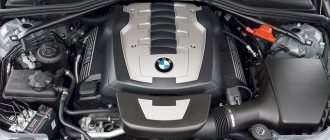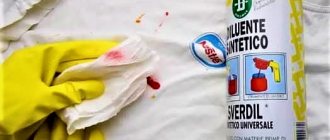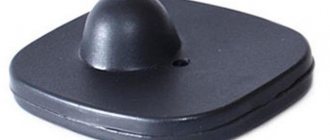The name by which this coating is defined comes from the merger of two words “alcohol” and “acid”, which indicates the synthesis of complex alcohols with acids. Removing alkyd paint from a surface is most often not so easy, and this is mainly prevented by film formers that contain glycerin for GF or pentaerythritol for PF. However, in the question of how to remove alkyd paint, a solution exists, especially in different variations, that is, you can use different means and methods for this.
How can you dilute metallic car paint?
In case you don’t know which solvent to dilute metallic paint
, there is no need to experiment, but it is better to immediately ask for advice from professionals. But you can remember that solvent 646 is perfect for these purposes.
Interesting materials:
Additional insurance was imposed on MTPL, what should I do? The microsd cannot be read, what should I do? The float in the toilet does not hold, what should I do? The stove is not heating, what should I do? The flash player is not updating, what should I do? Instagram does not update on Android, what should I do? Skype is not updating, what should I do? I haven’t paid for paid parking, what should I do? The nut on the angle grinder won’t come off, what should I do? The disk does not open on the computer, what should I do?
Surface cleaning
Before you wash off the alkyd enamel, you need to remember a few simple rules:
- The sooner you start removing the stain, the better the effect will be, and ideally the stain should be removed immediately.
- A large stain should first be wiped with a paper napkin or natural cloth.
- Cleaning should be done from the edges to the center of the stain so as not to rub it, increasing the area.
- If a stain is being removed from a fabric, then it is advisable to test any product on the tip of the material.
Vegetable and butter
To clean the contaminated area, the oil is mixed with washing powder and applied to the surface for half an hour. Source hozsovety.ru
First, remove the alkyd paint from the material with a cloth or paper napkin so that the layer of dirt becomes thinner. Mix vegetable oil or butter with washing powder to obtain a gel consistency, apply it to the stain, extending 2-4 mm beyond the perimeter of the stain, and leave for half an hour. After this, water or sprinkle the area to be treated with dishwashing detergent and wash. At the end of the operation, it is advisable to wash the fabric completely.
This recipe is good for removing paint from any areas of the body that you were careless to stain (hands, face). The algorithm of actions does not change, only instead of leaving the gel on the skin for half an hour, it is advisable to rub it, diluting the contamination, and then wash it off with washing powder or laundry soap.
Important! This recipe should not be used for concrete and wood products, as they absorb oil. This means that after removing the paint, a greasy stain will remain.
Acetone and other solvents
This component is suitable for removing alkyd paintwork materials, including old stains from paint or varnish from clothes Source drive2.ru
Alkyd paint stains can be removed with aggressive compounds such as acetone (C3H6O) or a solvent such as P-645, P-646 or P-647. The advantage of such liquids is that they can dissolve dried paint materials that are several days or even months old. However, in order to efficiently clean the contamination, it is advisable to carry out such a procedure as early as possible. To clean stains from alkyd paint, you will need a paper or cloth napkin - you just need to wet it and wipe off the dirt - continue until the operation is completed.
Attention! Acetone and solvent cannot be used to clean synthetic materials, as these are aggressive compounds that dissolve synthetics.
Video description
How to remove a paint stain? How to remove paint stains from clothes?
White spirit and nail polish remover
Suitable for removing solvent-based paintwork from almost any surface; nail polish remover and white spirit are suitable Source citynail.com.ua
White spirit (Stoddard solvent) and nail polish remover are not as aggressive materials as acetone or P -646, so they are practically harmless for dried pentaphthalic (PF) or glyphthalic (GF) enamel. But, if such paints and varnishes have dripped onto clothing or some other surface and another 1-2 days have not passed, then you can try to remove the stains, although it is best to do this while the paint is still wet. For the cleaning process, you will need a cloth or paper napkin, which should be wetted and rubbed off the stain until it disappears.
A mixture of turpentine and ammonia
Such turpentine is obtained by distillation from resin, wood and needles of coniferous trees, such as spruce, pine, fir, juniper Source crb-kolomna.ru
To wash off old glyphthalic or pentaphalic paint from clothes or any hard surfaces, you can use a mixture of turpentine ( turpentine oil) and ammonia (ammonium hydroxide, ammonia hydrate - NH4OH). The components in the mixture must be present in a ratio of 1/2, respectively. You can remove the stain by applying the mixture for 20 minutes. After the specified period, use a paper or cloth napkin soaked in this liquid to wipe off the stain. But this mixture has a serious drawback - its pungent odor, so this procedure must be performed exclusively in a ventilated area.
Required condition! It is not advisable to use such a mixture for cleaning alkyd stains from synthetic materials - they can be destroyed under the influence of these aggressive solvents.
Using factory paint removers
Designed for removing paint coatings based on nitrocellulose (NC), pentaphthalic (PF), oil-based (MA), glyphthalic (GF), polyurethane (PU), alkyd-urethane (AU), acrylate (AK), epoxy (EP), melamine (ML) ) and other paintwork materials Source himolimp.com.ua
Various factory removers are also widely used to remove stains from pentaphthalic or glyphthalic enamel:
- removing old paint SP-6;
- ABRO PR-600-R;
- ANTIKRAS;
- Prestige gel;
- etc.
All of these paint removers, which also include accidental stains, are labeled according to the type of surfaces from which they can remove stains, therefore, you need to pay attention to the text printed on the container. But, despite the fact that such products are intended not only for fresh, but also for old paint, your hopes may not be justified - a surface painted with several layers of enamel does not always lend itself to such influence.
Mechanical methods for removing alkyd coating
Home remedies and factory removers are not always practical for removing any paint coatings from the surface of walls and ceilings made of mineral materials such as brick or concrete, as well as metal. In such situations, mechanical impact methods are used.
Metal brushes
A device with a pile made of wire, varying in hardness and diameter, allows you to perform a wide range of procedures for mechanical processing of products Source galacentre.ru
Metal brushes of different hardness, the pile of which is made of thin steel wire, have long been used to clean surfaces from paint and varnish coatings. Such brushes can be manual, and they are also produced for angle grinders (angle grinders) or electric drills. Of course, carrying out such work with a manual device is too long and physically difficult, so it is used exclusively for small stains or splashes. Brushes mounted on an electric drill or grinder are much more effective and are used for cleaning large areas, for example, for removing alkyd enamel from a metal frame. But for cleaning concrete or brick walls, this is not the best tool - the brushes wear out and become clogged.
Turtle disks
Such discs are a flexible circle made of an elastic base, on which diamond chips applied in segments and a strong polymer binder are located. Source stroy-podskazka.ru The
turtle disc, well known to builders, or in professional language AGShK (diamond flexible grinding wheel) is an elastic disc with diamond coating, which is fixed using a polymer adhesive. The direct purpose of the turtles is grinding mineral surfaces, such as brick, ceramic/porcelain tiles and concrete. Such a circle will be very good at removing alkyd paint, but not for long, as it will quickly become clogged, therefore, AGShK can only be used to eliminate minor contaminants (splashes, stains).
Cleaning alkyd paint with chains
Clamp the rod (bolt) in the chuck of an electric drill, as shown in the photograph, so that the chains are at least 3-4 cm away from the head Source nashaotdelka.ru
The most effective way to clean brick and concrete walls from alkyd and oil-based paint coatings can be called a homemade device made from pieces of chain, as shown in the top photo. To do this, you will need a bolt 100-150 mm long and 10-12 mm in diameter, two nuts and three or four pieces of chain with several links (depending on the thickness, so decide for yourself). Place these fragments onto the bolt under the head, and then tighten them tightly with a nut and locknut. That's it, the device is ready - all that remains is to secure it in the electric drill chuck
To remove paint, turn on the drill and bring it to the surface of the wall so that the chains can hit the layer monotonously and at high speed (they will simply break the frozen paintwork). Since the drill chuck in the normal working position rotates clockwise, to beat off the paint you should stand with your right side to the wall - this way the fallen off paint particles will fall from top to bottom. If you turn your left side to the wall, the chains will break the coating from bottom to top, and all the small fragments will fly into the air, and some of them will settle on your head and shoulders.
Forum of auto repairmen Automaster himself
- Unanswered messages
- Active topics
- Search
- Search
- Entrance
- Registration
- Current time: 03 Oct 2022, 12:05
- Time zone: UTC+03:00
Soils
- Go to page:
Soils
- Quote
Post by Brodin » April 18, 2009, 10:54 am
Re: Soils
- Quote
Post by VanYok » April 19, 2009, 2:20 pm
Re: Soils
- Quote
Post by Pavel » April 21, 2009, 00:50
Re: Soils
- Quote
Post by Brodin » April 21, 2009, 6:38 pm
Re: Soils
- Quote
Post by Vitek » May 17, 2009, 21:42
Re: Soils
- Quote
Post by Pavel » May 18, 2009, 01:18
Re: Soils
- Quote
Post by Wasia 35 » 03 Jun 2009, 14:03
Re: Soils
- Quote
Post by Pavel » Jun 03, 2009, 11:10 pm
Re: Soils
- Quote
Post by Brodin » Jun 05, 2009, 12:16 pm
Re: Soils
- Quote
Post by Wasia 35 » 08 Jun 2009, 20:49
- Go to page:
- Forum Automaster himself.
- ↳ Announcements on the forum.
- ↳ Registration on the forum (problems?).
- Video lessons.
- ↳ Video tutorials on car painting.
- ↳ Video tutorials on body work.
- ↳ Video tutorials on gluing auto glass and interior repairs.
- ↳ Video tutorials are different, but useful.
- Repair of paintwork.
- ↳ Materials used for painting a car.
- ↳ Tools for painting work.
- ↳ Surface preparation and puttying.
- ↳ Priming and sanding.
- ↳ Painting of parts and car.
- ↳ Defects in paintwork.
- ↳ Car polishing.
- ↳ Painting plastic, bumpers and other non-standard materials
- ↳ Sealing a car for painting (masking).
- ↳ Miscellaneous.
- ↳ Photo reports.
- ↳ The garage is like a paint booth.
- Repair of bumpers and other plastics.
- ↳ Repair of bumpers and other plastics using proprietary technologies.
- ↳ New technologies for repairing bumpers and other auto plastics.
- Body repair.
- ↳ Body repair technologies.
- ↳ Protection of the body from corrosion.
- ↳ Materials, tools and equipment used for body work.
- Buying and selling a car.
- ↳ How to buy a car correctly.
- ↳ How to competently sell your car.
- Electrical, alarms, car audio and car diagnostics.
- ↳ Car electrics.
- ↳ Alarms, ABS, AirBag, diagnostics.
- ↳ Car audio
- Repair of chassis, engine, gearbox and automatic transmission.
- ↳ Repair and operation of gearboxes and automatic transmissions.
- ↳ Chassis repair.
- ↳ Engine repair.
- ↳ Gas equipment on a car.
- Useful tips.
- ↳ Useful tips, main.
- ↳ Useful tips for puttying and sanding.
- ↳ Useful tips on grinding and polishing.
- ↳ Useful tips for assembly and disassembly.
- ↳ Bodywork, welding
- ↳ Car care.
- ↳ Useful tips for priming.
- Do-it-yourself car design (tuning).
- ↳ Exterior
- ↳ Interior
- ↳ CAR tuning, general.
- Car manuals, car repair and operation manuals.
- ↳ Repair and operation manuals.
- ↳ Technical documentation.
- Shall we discuss? Gentlemen, car enthusiasts.
- ↳ The cars we drive.
- ↳ A car that I will never drive.
- ↳ The car I want.
- I will buy and sell. Bulletin board.
- ↳ I will buy.
- ↳ Equipment and tools for repair.
- ↳ Spare parts, wheels, rims, tires.
- ↳ Selling.
- ↳ Cars, motorcycles, vehicles.
- ↳ Equipment and tools for repair.
- ↳ Spare parts, wheels.
- Smoking room.
- ↳ Any topics that do not violate the rights of other people.
- ↳Humor
- ↳ Legal aspects of a motorist.
- Online Store (Advertising)
- ↳ Store operations, payment and delivery
- ↳ Sale of consumables for car repair and painting
- ↳ Sale of equipment for painting and repair
Who's at the conference now?
Currently browsing this forum: no registered users and 0 guests
How to clean GF 021 primer from plastic?
GF is a glyphthalic primer, if you read the instructions for its use, for example primer GF-021, before application it is diluted with Solvent (if necessary)! [][1] or a mixture of Solvent and White Spirit (one to one), which means you can wipe it off with the same Solvent. You can use White Spirit.
Interesting materials:
How long can honey mushrooms be stored in the refrigerator? How long can dried fruits be stored? How long can you take chondroitin and glucosamine? How long can you take creatine? How long can I take L carnitine? How long can you take Riboxin? How long can you take flax seed? How long can you stay on a buckwheat diet? How long should I take coenzyme q10? How long is paid sick leave?
